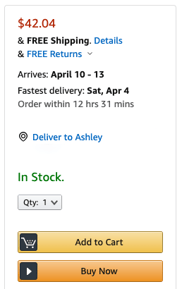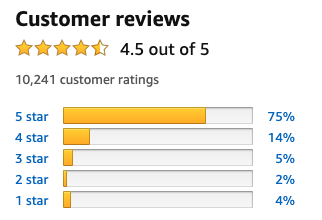It’s hard to remember that when Amazon debuted in 1994, it only sold books. Today, Amazon pushes nearly 500 million products on its U.S. website alone. So, it’s no surprise that for the last few years, this e-commerce behemoth has accounted for almost half of America’s online spending.
As the grandparent of e-commerce, Amazon has plenty of lessons to teach utilities and other tech-laggard industries about how to build an e-commerce website that engages customers. In fact, one 2019 survey found that all but the youngest generation believes that Amazon has the best user experience compared to Facebook and YouTube.
This is a key concept for utilities, which, like Amazon, must appeal to customers ranging from baby boomers to Gen Z.
Amazon accomplishes this without bells and whistles. The basic structure of the company’s easily navigable website has changed little in the last quarter-century.
That’s good news for tech-adverse utilities concerned about the expense and effort of constantly updating e-commerce sites. It’s easy to borrow the elements that make Amazon.com a success—and to learn from the company’s e-commerce strategy.
The outside-the-box thinking Amazon used to become an e-commerce VIP
State-of-the-art searchability. Amazon is a search-driven website, with a prominent search bar on every page. According to an analysis of 60 e-commerce sites by Baymard Institute, elements like search autocomplete, filtering and the guidance function make Amazon’s on-site search a state-of-the-art user experience.

Amazon makes searching easy for all users by allowing them to click on both product images and blue hyperlink text. And its personalization feature that lists similar products enjoyed by other shoppers is easy to scroll through.

Product pages that make buying easy. Amazon isn’t going to win any design awards  with its product pages, but it doesn’t have to. What customers want is easy-to-find info about the product and a simple way to buy it. Amazon accomplishes both, with the reviewers’ star rating right below the product name and the price and shipping info directly to the right.
with its product pages, but it doesn’t have to. What customers want is easy-to-find info about the product and a simple way to buy it. Amazon accomplishes both, with the reviewers’ star rating right below the product name and the price and shipping info directly to the right.

User reviews. According to Baymard Institute, 95 percent of shoppers on e-commerce sites rely on reviews to learn more about products. Amazon was one of the first sites to post reviews, and it remains a leader in this area.
One way Amazon accomplishes this is by using a ratings distribution summary that tallies how many five-star, four-star, etc. reviews a product receives. Including negative reviews makes viewers feel more confident that the reviews are genuine.

1-click ordering. Amazon patented this idea in 1999, but the patent expired in 2017, making it available to everyone. One-click ordering means a customer enters their billing and shipping information once and then on all subsequent orders, they simply click a product button to make the purchase.
Adding one-click ordering to e-commerce sites helps prevent cart abandonment, which has been estimated to be as high as 70 percent in some studies. It’s also an easy way to collect customer data like email addresses and mobile numbers.

Lessons for utility companies
Amazon teaches us that our e-commerce sites don’t have to be flashy to succeed. In fact, the easier to use, the better. And make sure to include customer reviews to help reassure buyers about energy-saving devices and other products they may not understand.
Amazon is also a leader in reactive design, or as Forbes describes it: “the ability to react to a customer's engagement with personalized attention to increase overall satisfaction.” This is a concept utilities should use as well. If a customer buys a smart thermostat, for example, the e-commerce site can suggest a smart plug or a smart lighting system or even a smart appliance, instead of a similar product, like another smart thermostat brand.
Learn more about how your utility can harness new technology to meet evolving customer expectations by downloading our free e-book: Customer Engagement Lessons from Domino’s (and Lyft, and Zappos, and ...).






